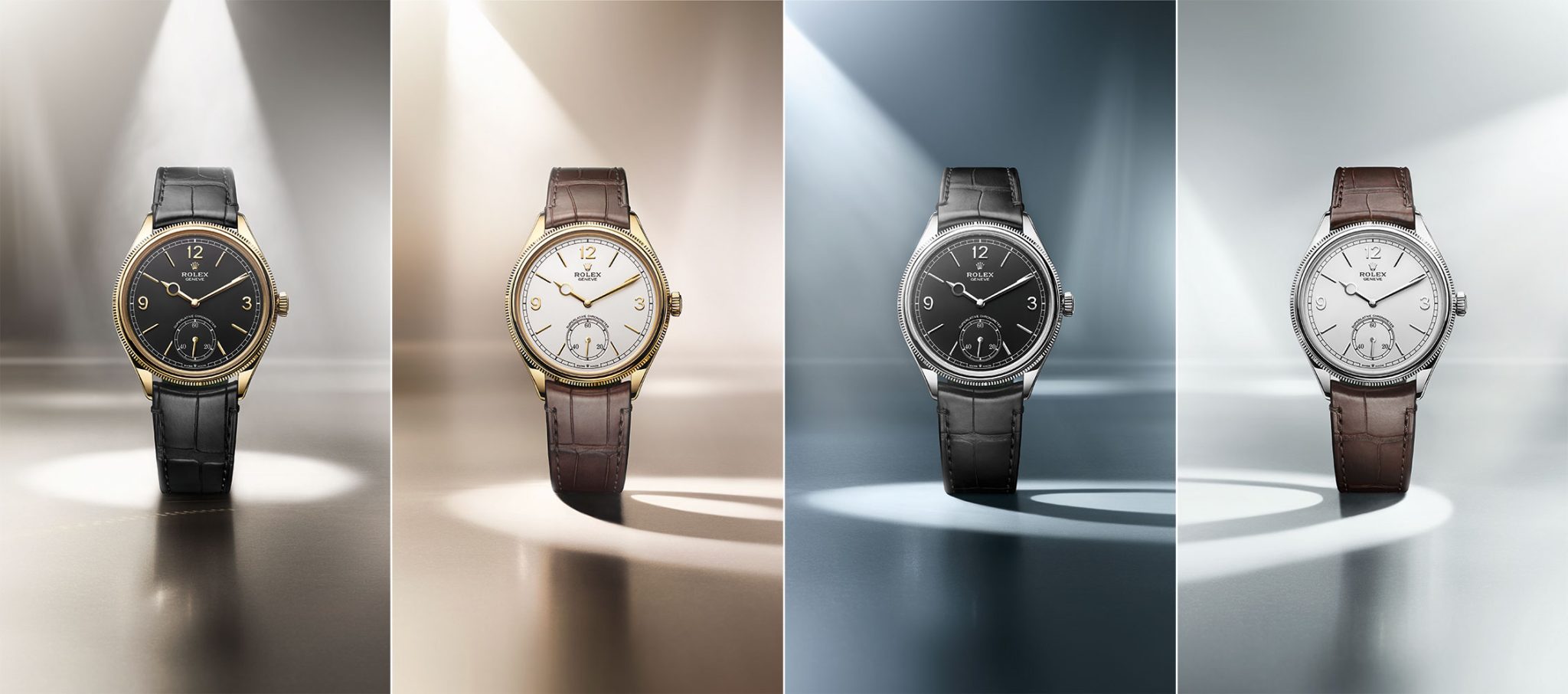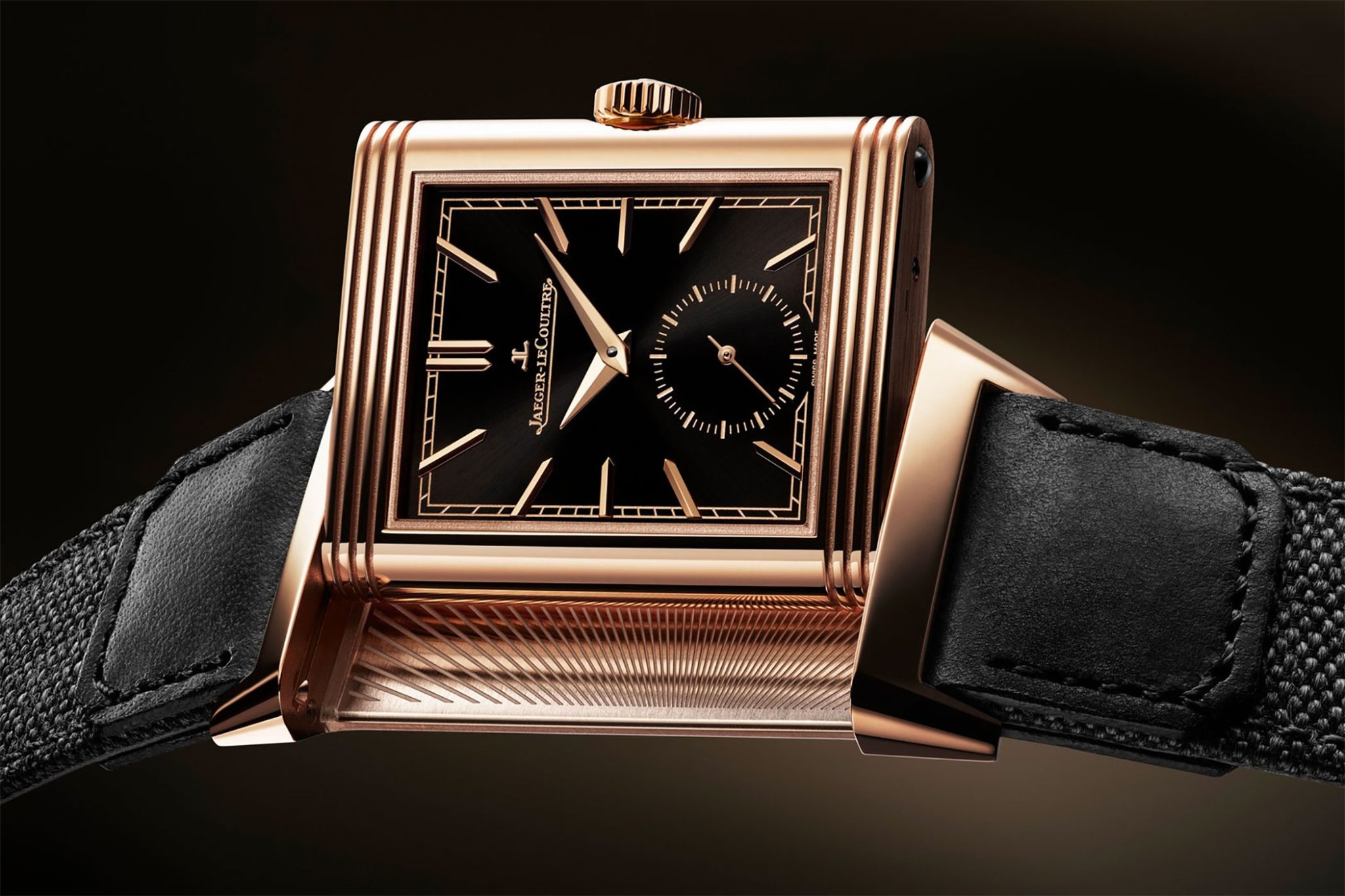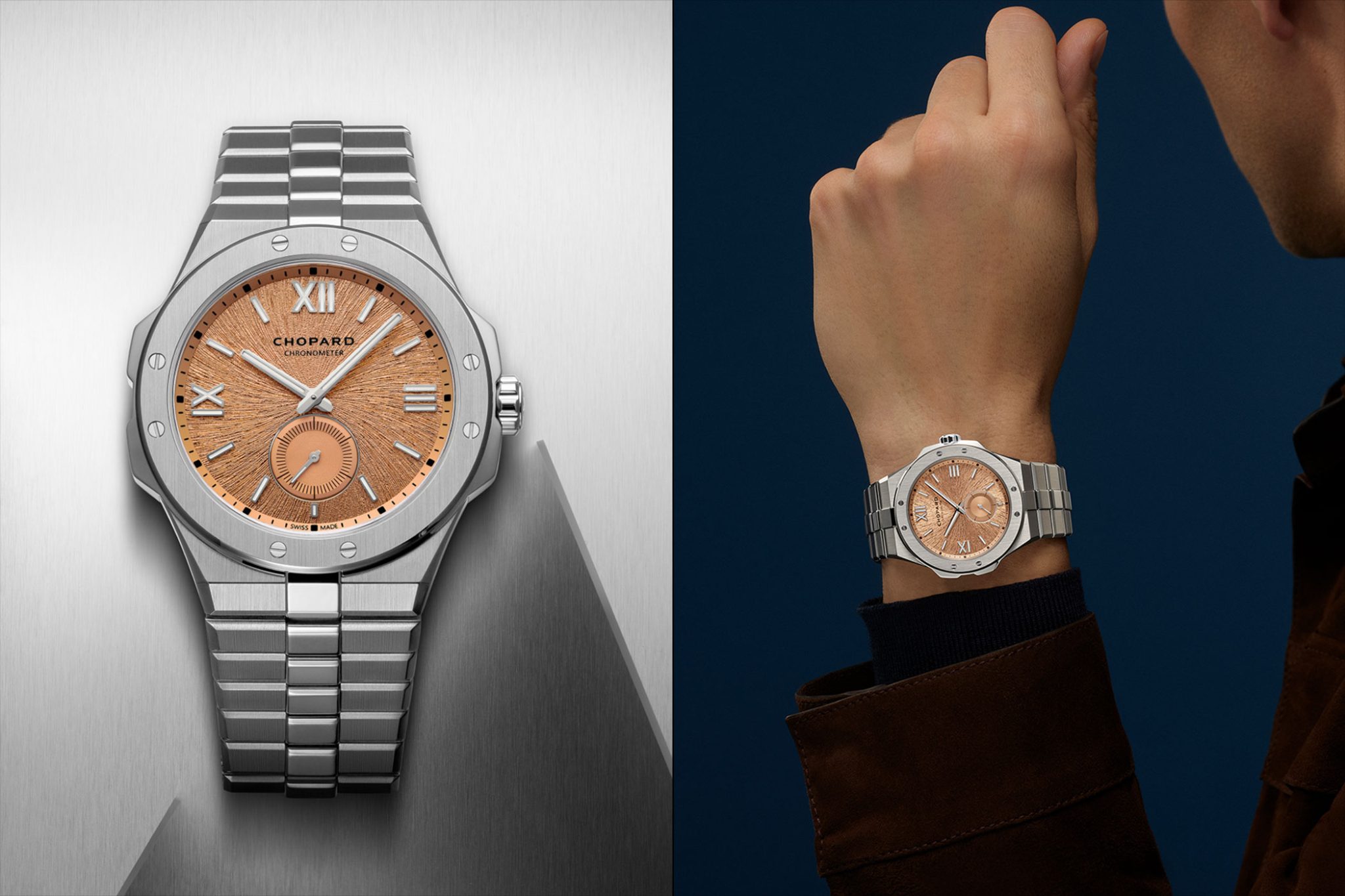

Watches & Wonders 2023: Swisswatches’ Top Ten Collector Watches
Honestly, we aren’t often ones for rankings, but after numerous questions from our fans online, on Instagram, alongside countless discussions during the fair, we can’t seem to resist. We all want to know: what are the most important mechanical watch innovations to emerge from Watches and Wonders 2023? Sit back and enjoy a very personal selection of the most important pieces of 2023.

It’s odd that we are still so drawn to such lists on the internet, although we know full well that they are dangerous and somehow simultaneously fairly pointless. Dangerous because almost all 48 of this year’s exhibitors in Geneva are among the best watch manufacturers on the planet, thus already representing the elite – and these companies alone have presented hundreds of new models and references. Pointless because virtually none of us watch all ten of the most important science fiction blockbusters, buy the ten best sports cars, or eat the ten most important vegetables with the highest iron content (or perhaps we do?).
48 top-quality exhibitors
For those who like a watch that can match up to certain superlatives, the ranking could be based around the ‘most elegant’, the ‘most valuable’, and the ‘most accurate’ watches of Watches and Wonders 2023. But that’s not what we’re all after here – better to opt for a classic and ever-popular ‘Top Ten’ approach.

Carefully selected: We tried and tested each watch on the wrist
Before colleagues at company headquarters or hard-working PR teams (to whom we would like to express our sincere thanks for organising almost 50 appointments at the trade fair) give us a call: we know they have all worked with many watchmakers, engineers and designers, sometimes for years, on these models. They will also know that finding a terrible watch in the price segment of 5,000 euros plus is highly unlikely anyway. Therefore, this is not so much a ranking as a selection that may serve as a guide for collectors who simply want to get a second opinion. This ranking is a gauge for the hundreds of employees at the horology houses who know their own models by heart, but have not seen a single model from the competition.

It is very important to us that we only judge watches that we have personally worn on our wrists. We make no exception to this rule, unless it’s a Grande Complication or a prototype. On another note, we have not been able to look at all brands, not least those that were not directly at the fair. There will be plenty of opportunities to make up for it during the year!
The Swisswatches criteria for a good mechanical wristwatch
At Swisswatches, we judge watches according to certain criteria, which also correspond to my personal ones. What are these criteria? At its core, Swisswatches stands for the best manufacturing processes and excellent mechanics. The movement is the soul of a mechanical watch, so the first thing we are interested in is which movement was chosen for a model, alongside why and how it is finished. In the second step, I look at the design, not only according to my personal taste (which, of course, can never be completely discarded), but also factoring in its wearability and readability. Thirdly, I study the detail on the case, pushers, dial, plus the strap with its clasp. I ask myself the question: what style does the model embody? Then I look at the watch in terms of: how do the movement and design fit to the brand? Is it a logical further development or does the watch represent a break with previous conventions? In this context, Swisswatches is also concerned with what the wearer can experience with this watch. Is it an everyday watch or a dress watch, a piece equipped for the deepest ocean or a coveted collector’s item?

With that covered, we can at last begin Swisswatches’ somewhat different Top Ten of Watches & Wonders 2023. Even though this is an author’s personal favourites list, I will always include the team’s reflections, too. It was never voted on, though, because luxury is not a democratic process and a majority opinion limits the clarity of a good statement. Unsurprisingly, though, the team was not far apart. But that should not surprise you as a reader of Swisswatches. After all, our taste is also shaped by our demand for fine mechanics and perfect aesthetics.
1. A patented mechanism, a design to die for: Parmigiani Fleurier Tonda PF Minute Rattrapante
When it came to nominating the first watch, the Swisswatches founders and I didn’t have to hesitate for long. We immediately thought of the world premiere from Parmigiani Fleurier, the Tonda PF Minute Rattrapante, which, thanks to a second minute hand and two pushers, makes it possible to set the end of a future appointment in one-minute and five-minute increments in a way that was previously only known via the rotating bezel of a diver’s watch. This patented mechanism watch comes in a steel case with platinum bezel hand-guilloché dial and is powered by a beautifully finished calibre PF052 movement with micro-rotor and 48-hour power reserve. The classic Tonda PF Microrotor is also now available in solid platinum.



2. An elegant Rolex? At long last: the Perpetual 1908
Even though journalists at the fair were mainly discussing the design of the Rolex Daydate 36 in Everose with 31 emojis on the date function and seven sentimental words replacing the seven days of the week (and the question of whether or not it qualifies as Rolex), seasoned aficionados pointed it out to us: Rolex demonstrates this much humour with special pieces about once every decade.

On the other hand, Rolex is quite serious about another model that immediately caught our attention: the Rolex Perpetual 1908. What a good classic watch! The name for the two current models harkens back to the 1908 registration date of Rolex’s brand name, and the design to the first rotor-wound Rolex watches of 1931. Fittingly, the winding rotor is visible in solid gold: the yellow- and white-gold cases come with transparent casebacks, just like the platinum Daytona, and are also certified as Superlative Chronometers for superior accuracy. The calibre 7140 is a new development with Chronergy escapement, Syloxi hairspring and the Paraflex anti-shock system. The whole watch is a feast for the eyes, very wearable under the cuff, and extremely elegant thanks to the elaborate finishing and skeletonised gold rotor.

The movement is protected by five patents, two of which concern the reduction of the space required by the winding rotor. The third is the self-winding mechanism, the fourth is the mechanism of the small seconds indicator, while the fifth is the execution of Geneva Stripes cut on the movement bridges. The watch measures an enduring 39 mm in diameter, is water resistant to 50 m, and has 66 hours of power reserve.

For Rolex sports watch fans: we are divided when it comes to the Oyster Perpetual Yachtmaster 42 mm made of the in-house titanium alloy RLX. For me personally, the watch is too light, although that was precisely the developers’ goal: an ultra-light robust sports watch that is also corrosion-resistant. In the case of the second titanium watch from Rolex after the Oyster Perpetual Deepsea Challenge, the entire watch weighs less than the significantly slimmer, 40 mm IWC Ingenieur SL in titanium, despite its 42 mm diameter.

3. Comeback of the year: IWC Ingenieur SL – how does one make a Gerald Genta design even better?
We were very relieved when we strolled across to IWC’s booth this year. The brand’s most important watch (sorry Top Gun), the Ingenieur, is finally totally the Ingenieur again, almost as IWC commissioned it from Gerald Genta in 1970. Almost, because they started tweaking the design in all the right places. The new dial is a reinvention with a waffle effect, but fits 100 percent with the times. IWC only recently discovered the original drawing of the Ingenieur SL, and one particularly interesting detail on it is the crown, originally intended to be octagonal, which was one of the few elements that never made it into series production. The most important feature of the original was the bezel screwed directly into the case body. The five distinctive retaining holes required for this have now been discreetly interpreted with five screws to better position the tube on the case; a good compromise with the original!

Also back in the game is the soft iron cage, which was originally developed for the Mark 11 pilot watch in 1948. However, the anti-magnetism is well below the values achieved by Omega watches today, although perfectly adequate for everyday use.

In addition to the 100 m water resistance, the 120-hour or 5-day power reserve of the calibre 32111 fits very well. It’s a watch for every purpose and the whole week – or whole life. The watches were tested at IWC in a specially built simulation facility for 10 years of durability, which it completes in 14 days, during which the movements warm up at high speed.

We undoubtedly liked the steel version the best, even though the titanium version still has a pleasantly heavy weight in the hand and the grey dial suits it excellently. It’s actually a shame that this watch is only sold in IWC boutiques. At least in Germany, the sole boutique in Munich offers a freshly tapped beer.

4. Cartier Tank: one for the weight-lifters
For us, the Cartier Tank Normale in platinum from the Cartier Privée collection represents an absolutely exceptional watch. As we wrote in our great Tank article, based on the original model designed by Louis Cartier in 1917, it inherits both the proportions and the characteristic bevelled sapphire crystal of the first model. Cartier, after all, supposedly designed the original watch after reading an article about the first tracked tank, a Renault, that put the fear of God into German soldiers in the trenches of World War I, and gave the first prototype of the watch to U.S. General John Pershing in 1918. The platinum model with a red cabochon ruby on the crown is so heavy that you might truly believe you are wearing a small tank on your arm – yet the design remains sensationally understated and is a must for all fans of elegant dress watches with history.

5. Welcome to the Piaget Society: The Piaget Altiplano Ultimate Automatic Rose Gold with blue dial
Another sensation of elegance for us at the fair was Piaget. We have already reported in detail about the brand, which, in the sixties and seventies, caught the eyes of artists like Andy Warhol and Salvador Dali, alongside Hollywood stars and presidents’ wives alike. This year, we were particularly blown away by the perpetual calendar in gold with green dial from the Polo series in the 42 mm case with a new quick-change bracelet. Only one watch, which will not arrive at retailers until June, is even more elegant: the Altiplano Ultimate Automatic 41. It is now being offered for the first time in a variation in which the entire open-worked record-breaking movement is bathed in dark blue. Dark blue bridges and the dial play off the rose-gold tone of the case, bezel and gold oscillating weight. This abruptly changes the character of the nevertheless very technical movement 910P and made it the absolute insider tip of the fair.

6. Jaeger Le-Coultre: Golden ratios and enchanting black dials
Everyone agreed on one watch: Jaeger LeCoultre’s famous Tribute series with small seconds is simply the most beautiful tribute to the original famous 1931 reversible watch. The case of the Reverso Tribute in pink gold has been thoroughly redesigned for 2023, and its height has been reduced by almost 1 mm to just 7.56 mm. The case’s lugs, which have been improved yet again, lie even better on slender wrists. Above all, we celebrate the black dial, as it comes very close to the black dials of the very first original Reverso. It offers a spectacular contrast; if you like more character, opt for the burgundy lacquer dial.

7. Laboratorio di Idee: The first annual calendar from Panerai – and what a calendar it is
Panerai offers a very special watch in platinum: the Radiomir Annual Calendar. Annual calendar and Panerai? That’s right. It’s a completely new complication for the Swiss company with Italian roots, and it’s one that CEO Jean-Marc Pontroué solves elegantly. The dial watch displays all the necessary information very clearly. The date and day of the week are still classically displayed at the 3 o’clock position through two openings in the dial. The upcoming month is indicated on an external rotating disc by an arrow at 3 o’clock. This is new and so convincingly simple that you wonder why someone didn’t think of it before. At each change of the month, a cam in the movement makes the disc jump directly to the next month. The automatic calibre P.9010/AC was supplemented by a corresponding module for this purpose. The 45 mm case is surprisingly comfortable to wear.

Leaving the gold version with blue dial to one side, only the platinum watch with a burgundy sunburst dial constitutes the ‘Experience Edition’. Each owner is invited on a trip to Rome. Currently, the watch is only available with Italian month names, wishing for more internationalism á la Rolex Day Date. By the way, fans of Panerai’s famous bronze cases, known as ‘Bronzo’, should check out the new case made of so-called Brunito eSteel, which was introduced into the rest of the Radiomir series. It’s a novel finish that creates an antique look. To achieve this aesthetic, in addition to the weathered effect achieved by means of PVD (Physical Vapor Deposition), each cushion-shaped case is hand-finished, giving it an individual character.

8. Chopard marries LUC with Alpine Eagle
You have to hand it to Co-President Karl-Friedrich Scheufele. The Alpine Eagle is and remains the steel watch sensation of the decade. However, that is clearly an understatement: the watch, which he originally designed in 1980 to impress his father and which was already a success back then, has been celebrating its mechanical comeback since his own son in turn primed the relaunch in 2019. It just doesn’t always take a famous designer like Gerald Genta to create a sensation: sometimes, it takes a family dedicated to good watches and quality – as Chopard has done for three generations.

It is equipped with the L.U.C 96.40-L movement, which is only 3.30 mm high. This is also a sensation, since normally LUC and Chopard watches are strictly separated. The movement dates back to the first L.U.C calibre in 1996. The calibre operates at a frequency of 4 Hz and offers a power reserve of 65 hours, combining two superimposed barrels thanks to the Twin technology. The entire case, with its 8 mm height, is perfectly balanced. We couldn’t take our eyes off the brass dial, which, like all Alpine Eagle models, bears an embossed pattern inspired by the iris of an eagle. It is combined with white-gold hands covered with Super-LumiNova Grade X1; a luminescent material that has 60 percent more luminosity than conventional LumiNova and is more resistant to aging. The most striking feature on the watch dial is the debut of a new colour: following the Aletsch Blue, Bernina Grey and Pink Dawn colour variations, the new ‘Monte Rosa Pink’ also takes inspiration from the Scheufele family’s adopted home, the Swiss mountains. After the Alpine Eagle Flying Tourbillon, the new Alpine Eagle 41 XPS is only the second watch in this collection to be awarded the prestigious Poinçon de Genève.

9. Vacheron Constantin embraces zeitgeist with the Traditionnelle Tourbillon retrograde date display.
While open dials are a nice-looking touch on many wristwatches, it’s extremely important that the execution and the historical justification for a brand to do something like this have been considered. Otherwise, it remains just a gimmick that can, worst case scenario, backfire. Not so with Vacheron Constantin, the brand that, until the rise of Patek Philippe in the 1940s, was the undisputed leader in watchmaking for royal and ruling houses around the world.

Since the press release for this watch alone runs 14 pages, we’ll limit ourselves to the bare essentials here. For us, the Traditionnelle Tourbillon with retrograde open-worked date display is probably the best watch of the entire fair. The first Vacheron Constantin timepiece with a partially skeletonized dial dates back to 1918, and in 2002, for the 247th anniversary of the horology house – this dial concept was revisited in the Reference 47247. In 2021, the Traditionnelle Full Calendar Openface set the first design cornerstone for an absolutely contemporary look for these ultra-complicated watches.

Through the transparent sapphire dial of the new 2023 model, which also features a hand-guilloché section, wearers can admire the manufacture calibre 2162 R31, whose plate for the retrograde mechanism has been accentuated with a slate-grey finish. The upper part is vertically brushed by hand, using a special abrasive to create light effects, while Vacheron guilloché thelower part by hand. As a result, the retrograde date display complemented by the tourbillon looks highly contemporary. The architecture of the calibre 2162 R31, slate grey in colour thanks to the use of NAC surface treatment, is easily visible from both sides of the watch. A worthy successor to the 47245 and 47247 references, we absolutely agree with Design and Heritage boss Christian Selmoni when he says: ‘We want to push the boundaries of technical complexity and horological beauty by making them visible.’

10. Patek Philippe provides insights and keeps track of things
The final word belongs to Patek Philippe this year. Our favourite model is not a technical novelty per se, as the Reference 5316 launched in 2017 famously combined a minute repeater, a perpetual calendar with retrograde date, and a moonphase display. But with the new Grande Complication Ref.5316/50P-001, Patek Philippe gives a whole new distinctive look to this watch in a platinum case, showcasing a dial in blue metallised sapphire crystal with a fine black gradient. The navy-blue calfskin strap with embossed textile motif also makes it downright sporty. Through the sapphire crystal, the master mechanical movement can be glimpsed rather than seen, giving this watch both a restraint and incredible sophistication at the same time. Even though we know Thierry Stern quite well by now, we have to admit: this watch was not taken out of the showcase for us either, but we still recommend it to all of our top collectors.

Frequent travellers will likely be delighted with the Calatrava Ref. 5224R-001, which features a Travel Time dual time zone function and an unusual 24-hour display. Extremely easy to use and fully suitable for everyday wear, only the diameter of 42 mm seems a touch too large to me. Meanwhile, the three white-gold automatic Calatravas presented with the calibre 6007G and carbon motifs have the perfect proportions at 40 mm.

On the other hand, we hotly debated with many colleagues at the fair whether the annual calendar of the Aquanaut Luce Reference 5261R would not in fact be an excellent men’s watch, precisely because it manages completely without precious stones and, at 40.4 mm, offers an excellent size for this wonderful complication. In the end, it’s always kind of the same with Patek: you can never decide and as soon as you have it, you immediately want the next one, too.

What is the destiny of the luxury watch?
In summary, it remains to be said: After a long Covid abstinence, the trade show was not a firework display of mechanical innovations, but it was very much a clear announcement of the direction in which style is likely to go in the next few years. Long gone are the days of loud or flashy models, at least when they don’t fit 100 percent with the company’s history. Refinement was there for all to see. The authentic brands lead the field. In terms of materials, steel is slowly being replaced in the top categories by platinum at the top end and titanium at the bottom end, and carbon fibre is getting the place it deserves as a 21st century material, at least in part. Watchmaking values are also becoming visibly perceptible in top brands in order to differentiate themselves: when Rolex opens casebacks and finishes movements, that’s saying something. At the same time, top brands like Patek and Vacheron are already sensing the next level of mechanical evolution: the visual journey into the interior of the watch is also staged as perfectly as possible from the dial side. Finally, as innovators in the industry such as Parmigiani prove every year anew: the possible functions of mechanical wristwatches are far from exhausted.











